A visit to Machu Picchu, a beautiful citadel high up in the Peruvian Andes, is on the bucket list of most serious travelers. Long designated as a World Heritage site, it was voted in 2007 as one of the New Seven Wonders of the World. And deservedly so!

But this time, my journey was going to be much easier. I was in Peru as part of a 2-week church volunteer trip. We (a group of 23) were helping build a greenhouse in an indigenous community near Cusco. For our labor, we were rewarded with a 2-day excursion to Peru’s “Lost City of the Incas.”
The very well-planned itinerary allowed us to experience the best of Machu Picchu. We would be spending a night in Aguas Calientes, the gateway town to Machu Picchu. This gave us more time to explore the ancient citadel in the less-crowded hours. Hopefully, sharing my journey will give you some good ideas for planning your own visit to this amazing destination.
The Trip to Machu Picchu Begins by Rail
Our journey began on a cool August morning (at 7:42am, to be exact!) with a 70-mile train ride from Cusco to Aguas Calientes. The PeruRail train departs from the Poroy station, located just outside of Cusco. The trip took a little over three hours – and gave us beautiful scenery all along the way.
- Click on photos to enlarge
We stopped mid-way in Ollantaytambo (in the Sacred Valley) to pick up more passengers. This is where we began to follow along the beautiful Urubamba River with steep mountains on both sides. We also made a short stop at “Km 82” – the place where trekkers depart for the classic Inca trail hike. Seeing a trekking group taking photos in front of the sign brought back a flood of great memories!
We arrived into Aguas Calientes (also called Machu Picchu Pueblo) in the late morning. No roads come here, so you must arrive by train through the narrow Urubamba River mountain gorge. We walked the short distance from the train station to our hotel. After check-in, we had a leisurely lunch nearby before meeting up with Esmerelda, our tour guide for the next two days.
Machu Picchu draws crowds of travelers from all over the world. Many of them are “day trippers” who come by train for a visit of just a few hours. Because of this, Machu Picchu is most crowded in mid-day, around 10am-2pm. From Aguas Calientes, buses shuttle visitors up (and down) the mountain on a zig-zagging road of switchbacks. The 20 to 25-minute ride costs around $12 each way.
It was now time to go explore the ancient site! Taking the shuttle up, we arrived around 2pm at the entrance gate to the “Historic Sanctuary of Machu Picchu” (UNESCO’s name for it). There we showed both our passports and entry tickets (with our non-transferable name and date). Upon request, staff will stamp your passport with a Machu Picchu “novelty stamp” so of course we all did!
Touring The Ancient Citadel of Machu Picchu
Machu Picchu’s mountain top location on a narrow ridge surrounded by lush green mountains is absolutely breathtaking! Located at 8,000 feet of elevation, the ruins overlook the winding Urubamba River some 1,500 feet below.
Machu Picchu was built by the Incas around 1450 at the height of the Inca empire. It was abandoned a century later. The ruins (covered by jungle growth) were first “discovered” in 1911 by Hiram Bingham, a Yale professor who was led there by a Peruvian guide. The local indigenous people knew of the site’s existence, but luckily the Spanish conquistadores never found it.
Machu Picchu is an amazing feat of Inca city planning, architectural design and construction. It is a complex of palaces, plazas, temples and homes built with beautiful stonework, amazingly carved and fitted together tightly without any mortar. The site also has around 700 terraces which provided for agriculture as well as limiting soil erosion on the steep mountainside.
Over the next 2.5 hours until the park’s 5pm closing, Esmeralda gave us a fascinating tour of the upper areas of this archeological site. There is so much to share about Machu Picchu but that is best left to knowledgeable guides when you make your own visit. However, I’ve included some photos from my two trips to give you a small flavor.
- Temple of the Sun
- Credit: Tim Smith / Hitching Post of the Sun (Intihuatana)
The Town of Aguas Calientes
After the tour, we headed back down the mountain. All hotels, restaurants and other tourist services for Machu Picchu are located in Aguas Calientes. One exception is the Belmond Sanctuary Lodge, a luxury (and quite expensive) hotel conveniently located up top, right outside the entrance to the Machu Picchu sanctuary.
We had a lovely dinner at Café Inkaterra, an upscale riverside restaurant in town. It is part of the Inkaterra Machu Picchu Pueblo Hotel, which is reportedly the nicest lodging in town. I had a delicious river trout with quinoa plus a decadent dessert. Then it was off to bed, since we had all gotten up at 5am this morning and we were tired. And tomorrow morning, we had our Machu Picchu sunrise experience with another early rise.
Sunrise over Machu Picchu
We took the 5:30am bus up the mountain so that we could enter Machu Picchu when the park opened at 6am. By now it was already light outside. We rushed to stake out our group’s own terrace level viewing spot. From here, we had beautiful early morning views of the ruins. At 6:58am, the first rays of direct sunlight popped over the mountains and fell upon us!
I have written another blog post about this very fun sunrise experience – which included an unexpected surprise that none of us saw coming. Read the post: Sunrise Over Machu Picchu & Flying Bouquets.
An hour or so later, we continued Day 2 of our Machu Picchu tour. Esmerelda, who was an excellent guide, toured us around the lower sections of the site. We also enjoyed “meeting” some of the adorable resident llamas leisurely grazing on the grassy lawn. The formal tour ended around 9:30am, giving us six hours of free time before we needed to meet back at the station for our late afternoon train.
Machu Picchu – Free Time to Hike & Explore
Some of the group immediately headed back down to town to visit the spa, relax, shop, eat and explore. Many of us stayed up on the citadel to explore Machu Picchu some more. For me, it was a wonderful opportunity to leisurely walk around the beautiful ruins on my own – letting the immense grandeur of it all soak in! It also allowed me to revisit (and take more photos of) some of my favorite areas while it was still relatively uncrowded.
- Huaynu Picchu peak
- Start of Sun Gate trail
In addition to touring the main site, Machu Picchu offers some hiking options for the hearty and adventurous visitors. There is a very popular climb up Huaynu Picchu peak. However, it’s clearly a no-no for someone like me with a real fear of heights. There is also a shorter, easier hike to the Inca Bridge (albeit on a narrow trail with steep drop-offs in parts) and a difficult hike /climb to the top of Machu Picchu Peak.
I opted for the beautiful hike up to the Sun Gate (Inti Punku) with two of my travel mates. The Sun Gate is at the top of a mountain overlooking the citadel. It’s where trekkers on the 4-day Inca Trail get their first – and magnificent! – view of Machu Picchu at the end of their long hike. It was still a good workout and took us 2.5 hours total. I cover these four hiking options (with photos) in more detail in a separate post. Click to read: Machu Picchu Hikes – Huaynu Picchu, Sun Gate & More.
Saying Goodbye to Machu Picchu – Back to Town
My hiking buddies and I exited the park around 1pm, feeling that we had really experienced the best of Machu Picchu! Before getting a well-deserved ice cream, we walked into the lobby of the exclusive Sanctuary Lodge for a quick peek. I shared with staff that I had spent one night at the hotel nine years earlier – at the end of my Inca Trail hike. It was definitely a splurge at the time, but after three nights of camping with no showers, it was heaven! (photos below)
There are no food services inside Machu Picchu. In fact, food is not allowed to be eaten inside the sanctuary. But just outside the park entrance, El Mirador snack bar sells bottled water, sandwiches, burgers and other refreshments (like my ice cream). Also, the Sanctuary Lodge offers a gourmet breakfast and lunch buffet, open to the general public.

Aguas Calientes (population around 1,600) is pleasant enough but it’s pretty much a tourist town to support Machu Picchu. We headed off to the train station (modern and nice) to meet our group, passing through a large souvenir market strategically located right next to the station – giving visitors the chance for some final shopping!
Our Train Ride Back to Cusco
Our train departed at 4:42pm, making the stop again in Ollantaytambo where we enjoyed some Peruvian “window shopping”! This is where friendly – and persistent – local vendors hold up items for sale right outside the train windows. It was a kick watching fellow travelers bargain and pay for their new purchases through the partially opened upper windows. Actually, I got a fabric doll this way on my first trip.
Adding to the fun, some of the trains (on the return) provide an onboard fashion show, featuring beautiful alpaca wool apparel – available for sale, of course! We arrived back into Cusco around 8pm, enjoying great views (as the train descended down the mountain) of the city’s golden lights shimmering in the night. It was a perfect ending to a magical visit to the magnificent & mystical Machu Picchu.
RESOURCES & HELPFUL HINTS
Some Tips About Visiting Machu Picchu:
- If at all possible, opt for an overnight stay in Aguas Calientes so that you will have more time to explore Machu Picchu – plus you’ll be able to do it during the non-peak hours with less crowds.
- June to August are the busiest months
- Visitors to the Machu Picchu Sanctuary are limited to 2500 per day, so make sure to arrange for tickets in advance, especially during the peak season. (Note: 2016 statistic, so check for the latest)
- Climbing Huaynu Picchu peak also has strict limits in the number of climbers and times so be sure to check that out ahead.
- A good tour guide for the ruins makes or breaks your experience.
- If you’re traveling on a package tour, many of the details are already handled for you. Independent travelers have to do more of their own homework!
MachuPicchuPeru.info Website – has a good Machu Picchu Practicalities page with information about visiting Machu Picchu. However, as you know, travel information is always changing so make sure to double check all important facts.
PeruRail – http://www.perurail.com/
- Peru Rail operates three different classes of train service from Cusco to Aguas Calientes – the no frills Expedition train, the Vistadome with a few more perks, and the deluxe Belmond Hiram Bingham.
- All trains depart Cusco in the morning (between around 6:40am-9am). The return trips depart Aguas Calientes in the afternoon (between around 3:20pm and 5:50pm). The trips generally take between 3 – 3 ¾ hours.
- If you’re staying in the Sacred Valley, you can start your journey in Ollantaytambo – it’s 1 hour 40 minutes to Aguas Calientes.
COMMENTS: Is Machu Picchu on your Travel Dream List? Have you already been? If so, how was your experience?

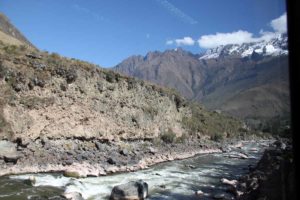

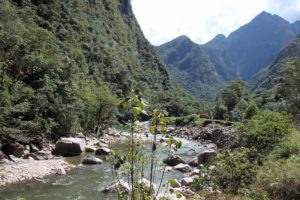


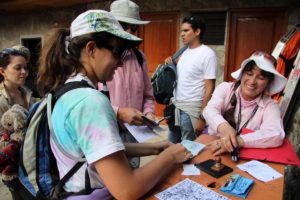


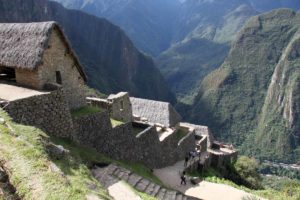


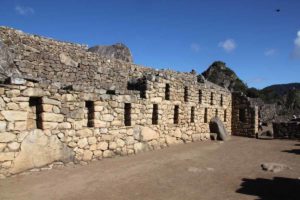




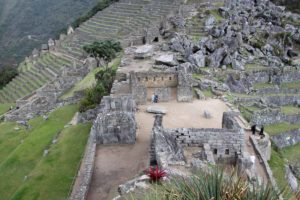








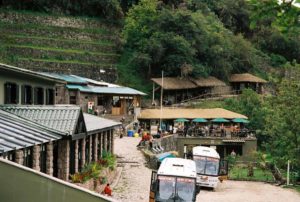







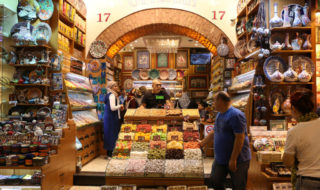
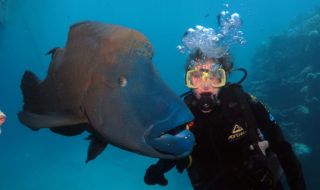
Post a Comment